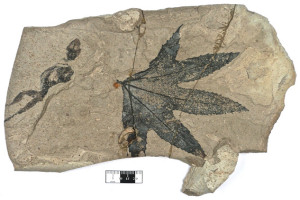Dec 19 2012
New Focus™, a Newport Corporation Brand, announces the new Model 8742 Open-Loop Picomotor controller/driver module with 4 channels. The compact, single-box design with an integrated controller and driver provides a low-cost solution for driving New Focus open-loop Picomotor products. The new module can be computer controlled with plug-and-play ease via the USB 2.0 and the 10/100 Ethernet interfaces using Newport's Motion Control Language (NMCL) command set.
 The Lizard Fossil
The Lizard Fossil
Advanced features for Model 8742 include the innovative Picomotor auto-detection technology, an embedded dynamic HTTP server, and connectivity that is supported by LabVIEWTM and Windows™ DLL. The intuitive graphical user interface (GUI) Windows application includes a device auto-discovery component. This open-loop Picomotor controller/driver is being offered as a stand-alone unit or as a 4-axis kit to include all the necessary cables and accessories. This kit is also bundled with two ClearEdge Picomotor mounts to provide a quick and easy start.
Each controller/driver can control one of four 4-pin RJ-22 single output ports for use with any single-channel Picomotor actuator at any given time. Other accessories include a multi-axis adapter that can be used to connect the 4-pin RJ-22 output ports to New Focus Picomotor products with 6-pin RJ-11 connectors, making this instrument extremely flexible. Ideal for a wide variety of scientific applications, Newport’s 4-channel controller/driver is CE and ROHS compliant and is available now for immediate shipping.
Source: http://www.manchester.ac.uk/Scientists at The University of Manchester have used synchrotron-based imaging techniques to identify previously unseen anatomy preserved in fossils.
Their work on a 50 million year old lizard skin identified the presence of teeth (invisible to visible light), demonstrating for the first time that this fossil animal was more than just a skin moult. This was only possible using some of the brightest light in the universe, x-rays generated by a synchrotron.
Dr Phil Manning, Dr Nick Edwards, Dr Roy Wogelius and colleagues from the Palaeontology Research group used Synchrotron Rapid Screening X-ray Fluorescence at the Stanford Synchrotron Radiation Lightsource in California to map the chemical make up of a rare fossil lizard skin. This cutting edge technology uses powerful x-rays that enabled the team to map the presence of phosphorus from teeth in this ancient reptile.
The relative position of the phosphorous in the skin fossil helped the scientists identify the type of lizard. They believe that the more elongated snout in conjunction with the general jaw shape bears a strong resemblance to a shinisaurid lizard (Bahndwivici ammoskius). The presence of phosphorous also demonstrates for the first time that the fossil skin is more than just a moult, as no lizards can shed their teeth along with their skin!
Talking about the images Dr Manning said: “Finding the presence of teeth changes almost everything we thought we knew about this fossil. We can identify the type of lizard for the first time, based upon the geometry of the teeth. Our findings also raise some fascinating questions about what happened to the animal after its death. What wiped out its bones but preserved the skin and the ghost of its teeth?”
The results of the analysis of the fossil using the synchrotron have been published in the journal Applied Physics A. It adds to the growing weight of evidence that powerful synchrotrons offer advanced fossil analysis.
Dr Manning also said: “The technique permits us to tease-out chemical information from fossils, information that you simply cannot see with the naked eye. Such chemical maps can help us see 'ghosts' of original biological structures that only remain in very dilute concentrations in the fossil.”
Dr Nick Edwards, a senior author on the paper, said: “This technology changes how we view taphonomy (the study of decaying organisms and how they are fossilized). We can now start looking for traces of animals that are totally invisible in visible light through analysing the bright chemical signature that appear under the powerful gaze of the synchrotron. This 'x-ray vision' will enable palaeontologists to add important information to the biology, anatomy and preservation of ancient life.”
The team worked with a leading geochemist, Dr Roy Wogelius (also a senior author), who was instrumental in the development of the techniques deployed by the Palaeontology Research Group. Dr Wogelius said: “These techniques are beginning to redefine the way we study Life on Earth. It is simply fascinating to work with biologists, physicists, chemists and palaeobiologists because at the crossroads of these disciplines lay many new discoveries for science.”
Dr Manning and his team hope to analyse more fossils using the Standford Synchrotron Radiation Lightsource and also the UK based Diamond Lightsource, to reveal new findings from ancient worlds by uncovering the subtle echoes of life left for science to find and interpret.